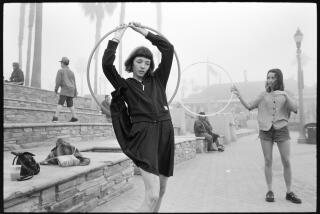Retired Navy photographer aims to captures World War II vets’ images before they’re lost to history
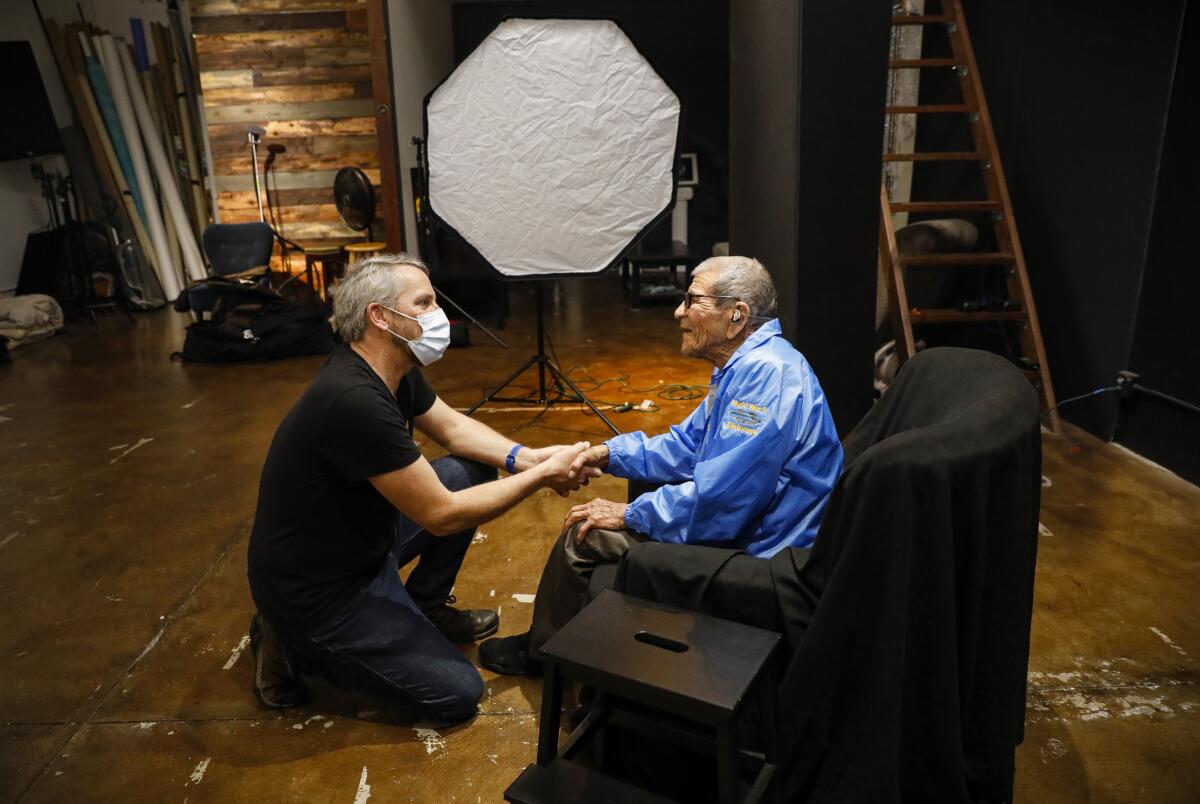
Since 2017, Spring Valley resident Mickey Strand has shot 106 of these portraits. Since then, more than 100 of these men and women have died.
- Share via
SAN DIEGO — After retiring from a long career as a military photographer, Spring Valley resident Mickey Strand began looking for some personal photo projects he could do to expand his portraiture skills. One of the subjects he landed on was an easy choice: photographing other local veterans who had served in World War II.
“Obviously, this was something close to my heart,” said the 54-year-old Strand, who spent 24 years in the Navy, retiring as the leading chief of Navy Combat Camera Group Pacific in 2009.
Since July 2017, Strand has photographed more than 100 World War II vets, taking their pictures as well as recording audio interviews of their war experiences that he turns into a brief written biography on the project’s website, veteransportrait.com. Strand said he is honored to hear these war stories and spend time photographing these heroic men and women. But the reality is that Strand is in a race against time.
Of the 106 WWII vets he has photographed over the last five years, more than 100 have died. Many of them were photographed in veterans homes and skilled nursing facilities across Southern California and were in the final months, if not weeks, of their lives. Taking these portraits has become both a mission and a labor of love.
“What I think about when I’m doing these sessions is that I might be the last guy they tell their story to,” Strand said. “My goal is to leave a legacy. Every artist struggles about the work they’re going to leave behind when they’re gone. I hope people can look at these portraits and say, ‘that was a body of work.’ After I die, that’s something I’d like to know.”
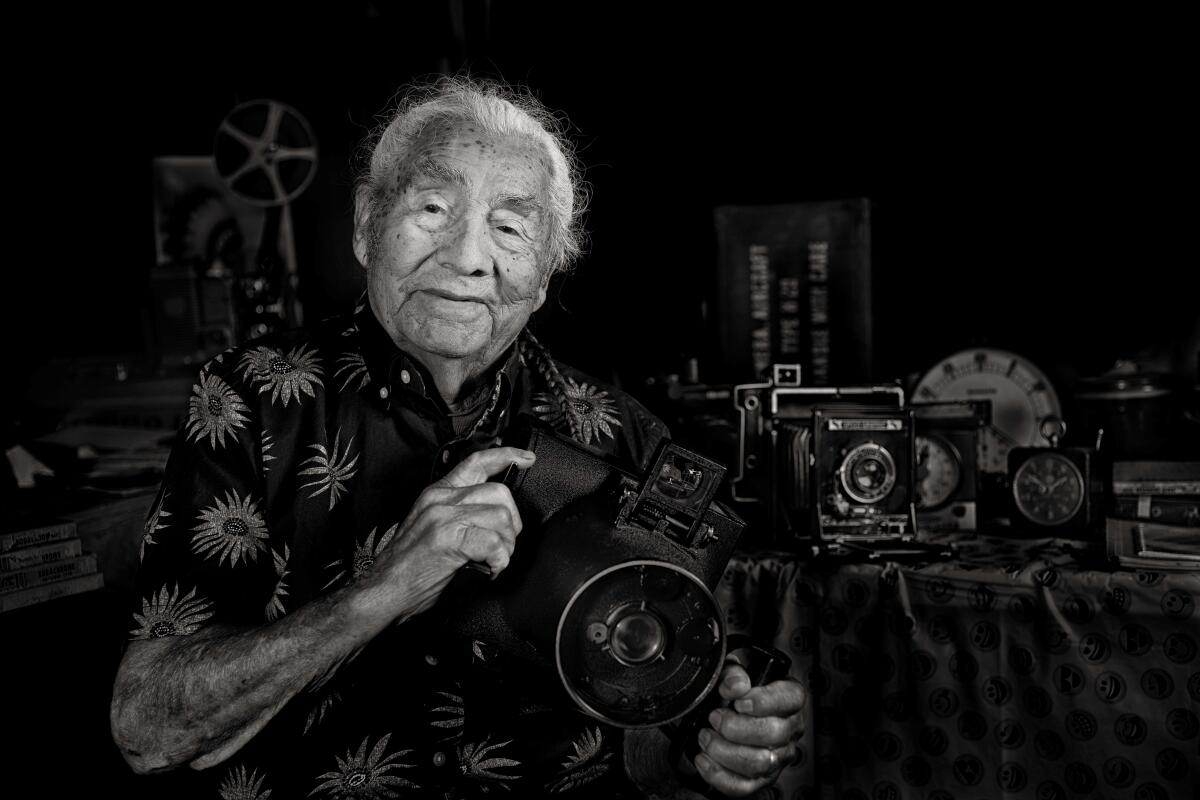
Finding the moment
Strand’s most recent veteran photo session was on March 10 with Joe Albert Gonzalez, 95, of Clairemont, who served in the Army’s 381st Company, 96th Infantry Division. He earned a Bronze Star for his bravery in the Battle of Okinawa, when he jumped out of a foxhole to rescue one end of a fallen stretcher bearing a wounded soldier, after one of the medics carrying the pallet was shot to death. Gonzalez helped carry the wounded man to safety through a hail of bullets.
For about 20 minutes, Strand sat with Gonzalez and asked him questions about his service for the audio recording. Gonzalez’s memories have faded with the years, but Strand was patient and cheerful. He has learned to ask the same questions three or four ways and eventually the veterans’ minds become more limber and the stories trickle out.
Gonzalez was born in San Diego and raised in Logan Heights. He was fighting as an amateur boxer with a mean left hook when the war began. He quickly signed up to serve with three of his brothers.
“I didn’t want to be on the outside. Everybody else was going,” he told Strand during the interview.
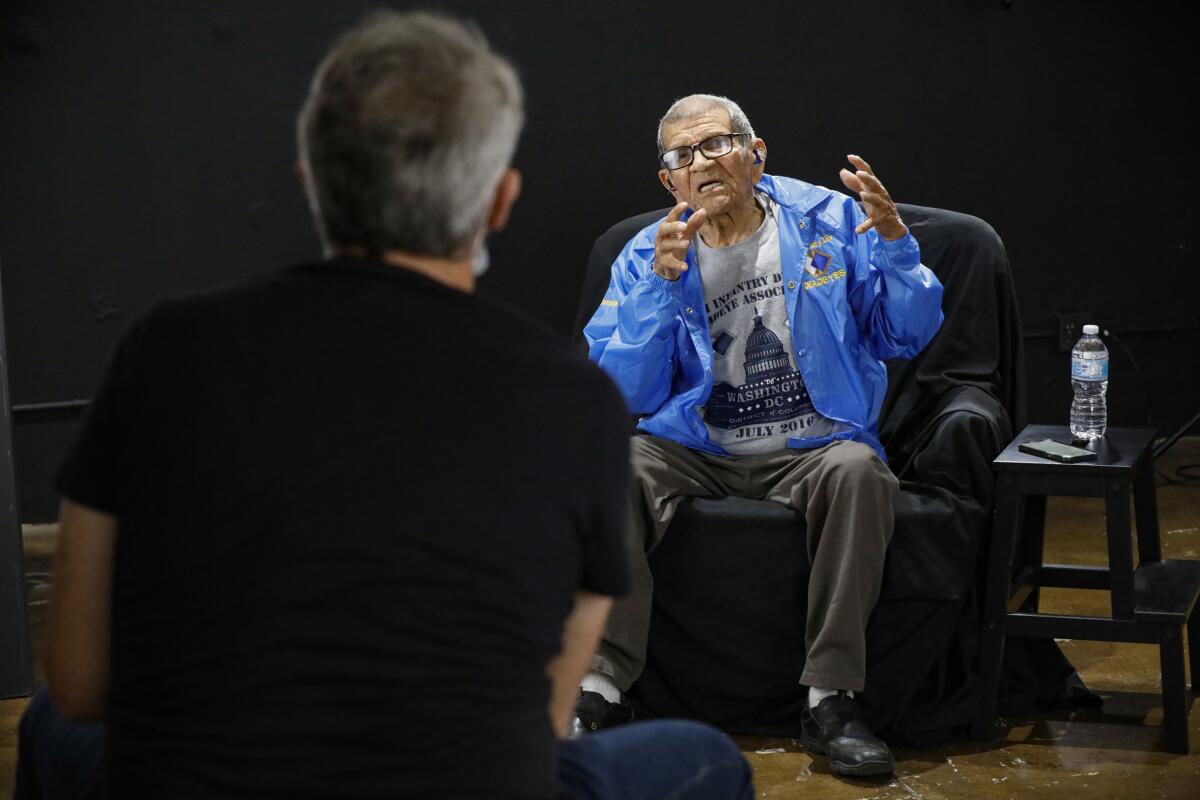
For the next 30 minutes, Strand took dozens of shots of Gonzalez, with his eyeglasses on, then off, smiling and laughing, then serious. Sitting back, then forward. With his jacket buttoned up and unbuttoned. Strand worked quickly, squeezing off more than 100 digital frames with a hand-held shutter trigger connected to a stationary camera, and sometimes moving up close for angled shots with a hand-held camera.
Strand likes to use a flash because it accentuates the “laugh lines” in the veterans’ faces and he shoots in color but converts the images to black and white for portraits.
“Black and white offers the opportunity to really see the person and not get lost in the color of what their clothing or the color of the surroundings are doing. It helps focus on the moments they shared with me,” he said.
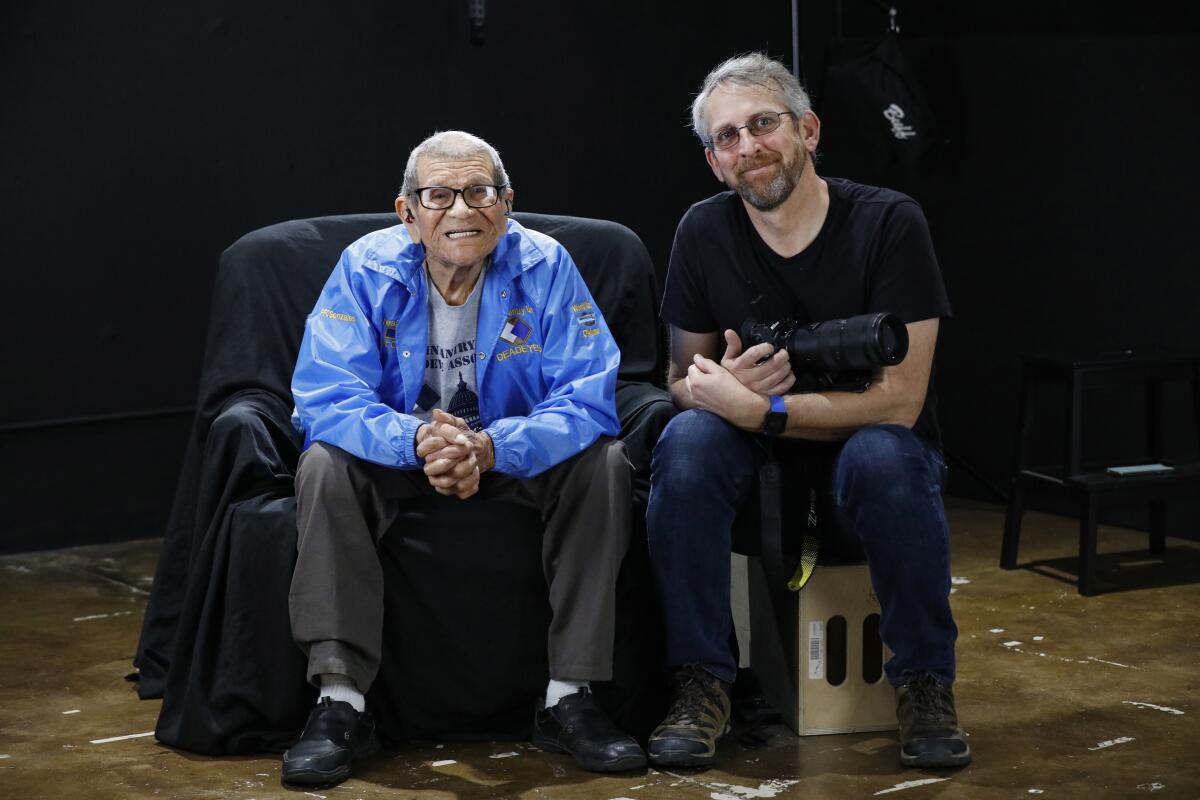
The “magical” image during this shoot came at the end of the session, when Gonzalez was mentally engaged, but his body was relaxed. His expression was natural and his eyes were lighted up with merriment. When Strand held the camera’s viewfinder up for Gonzalez to see the final photo, he laughed with approval and then asked for lunch.
His son and fellow Army veteran, Arnold Gonzalez, said his dad had been excited about the photo shoot, which will probably be his last. On April 22, Joe Gonzales will turn 96. He has told his family he won’t see 97. Because he lived through the war with only minor injuries in the 96th Infantry Division, Gonzalez believes 96 is his lucky number. He doesn’t want to tempt fate by surviving it.
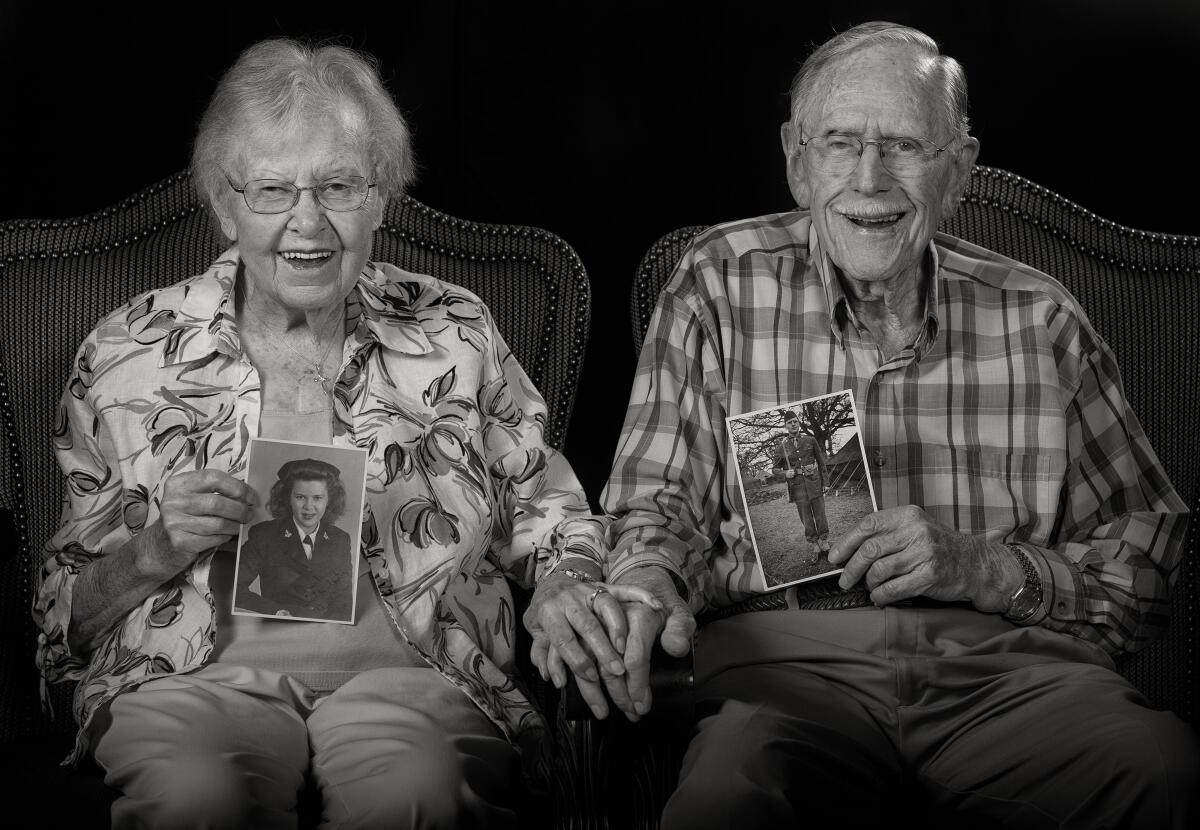
Getting out of the way
Strand fell in love with photography as a boy, developing images with his dad in the basement darkroom of their home in Racine, Wis. He took pictures for his high school newspaper and yearbook and then joined the Navy, where he served as a photographer on the USS Ranger and USS Long Beach ships and at Miramar Air Station. Later he taught photography at the Defense Information School in Maryland.
Two years after retiring from the Navy, Strand had a brush with death. After an appendectomy, he developed a deadly sepsis infection and spent six months fighting to recover. The experience led him to appreciate the importance of celebrating life and capturing its essence in photographs.
Unfortunately, Strand’s mentor told him that “life” was the one thing missing from his early attempts at portrait photography about six years ago.
“He told me my work was stagnant and not human enough,” Strand said. “He told me you’ve got to get out of the way to let the person be the person and find the moment.”
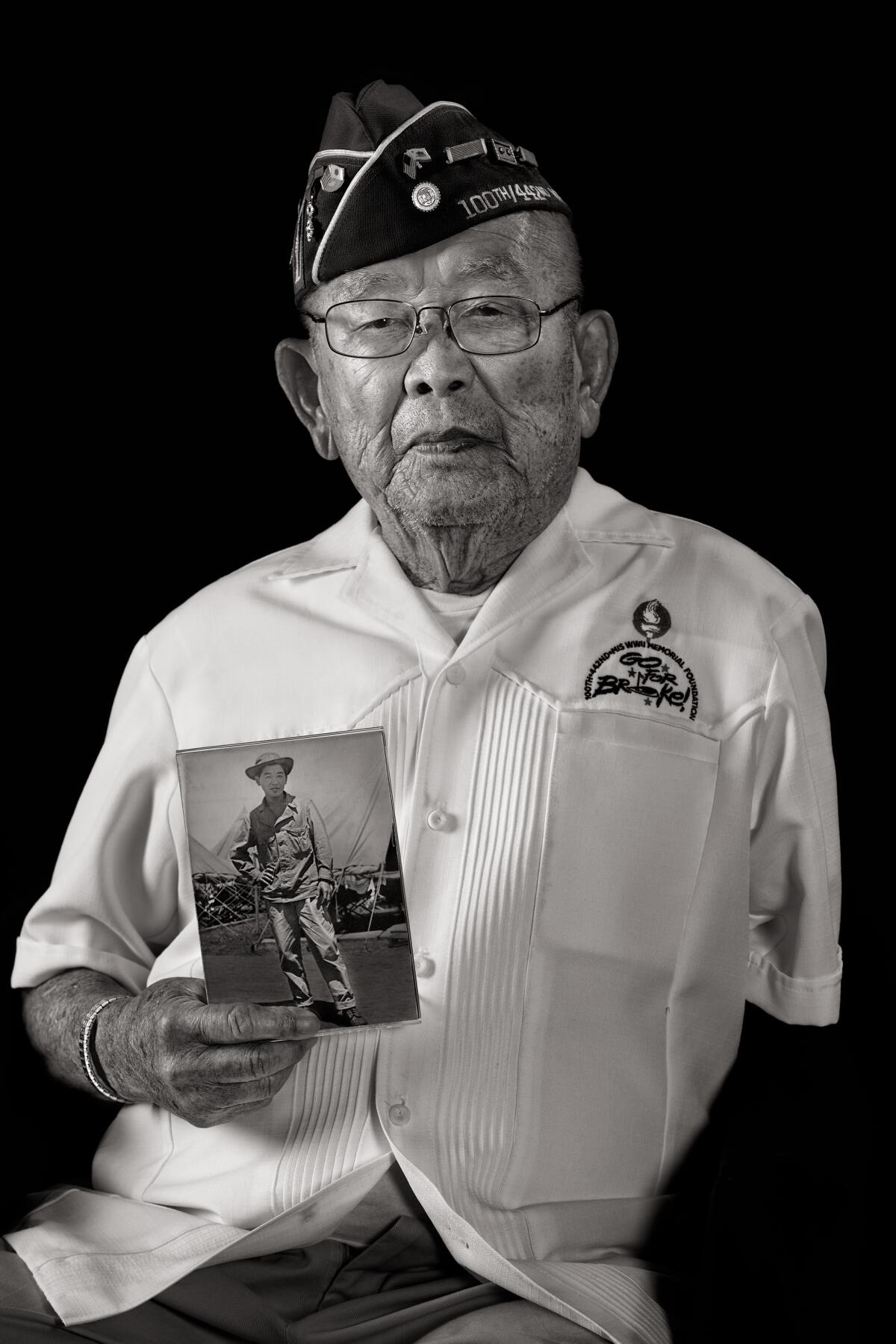
As his homework, Strand began looking for subjects that interested him to do a number of portrait series. The first series was “Behind the Cut,” which captures both the hard and soft sides of motorcycle club members. The “cut” is what bikers call their club vest. Strand is a motorcycle club member himself and he hopes his more than 100 portraits help improve the image of biker clubs, which he calls a “maligned and misunderstood culture.”
His second major series was the Veterans Project. It began on July 25, 2017, with a daylong shoot of 16 WWII vets at Mt. Miguel Covenant Village, an assisted living center in Spring Valley. The portraits were displayed at the center a few months later on Veterans Day. In the years since, he has done similar shoots and shows at veterans homes in Chula Vista, Ventura and Los Angeles. His largest exhibition was for Veterans Day in 2019, when he hung 86 portraits in the Museum at the Photo Centre in Palm Beach, Fla.
For the bigger projects, Strand brings his wife along to help conduct the interviews. When dementia has dulled the expression in veterans’ faces, Strand will often ask a family member or caregiver to stand behind the camera so he can capture the moment when the subject’s eyes light up with recognition. Sometimes, he’ll hand the subjects a meaningful object, like a Bible or camera, to stir memories of something they love. Some subjects show up for the shoot in their old uniforms, and others arrive in T-shirts. Many arrive with 75-year-old wartime photos of themselves.
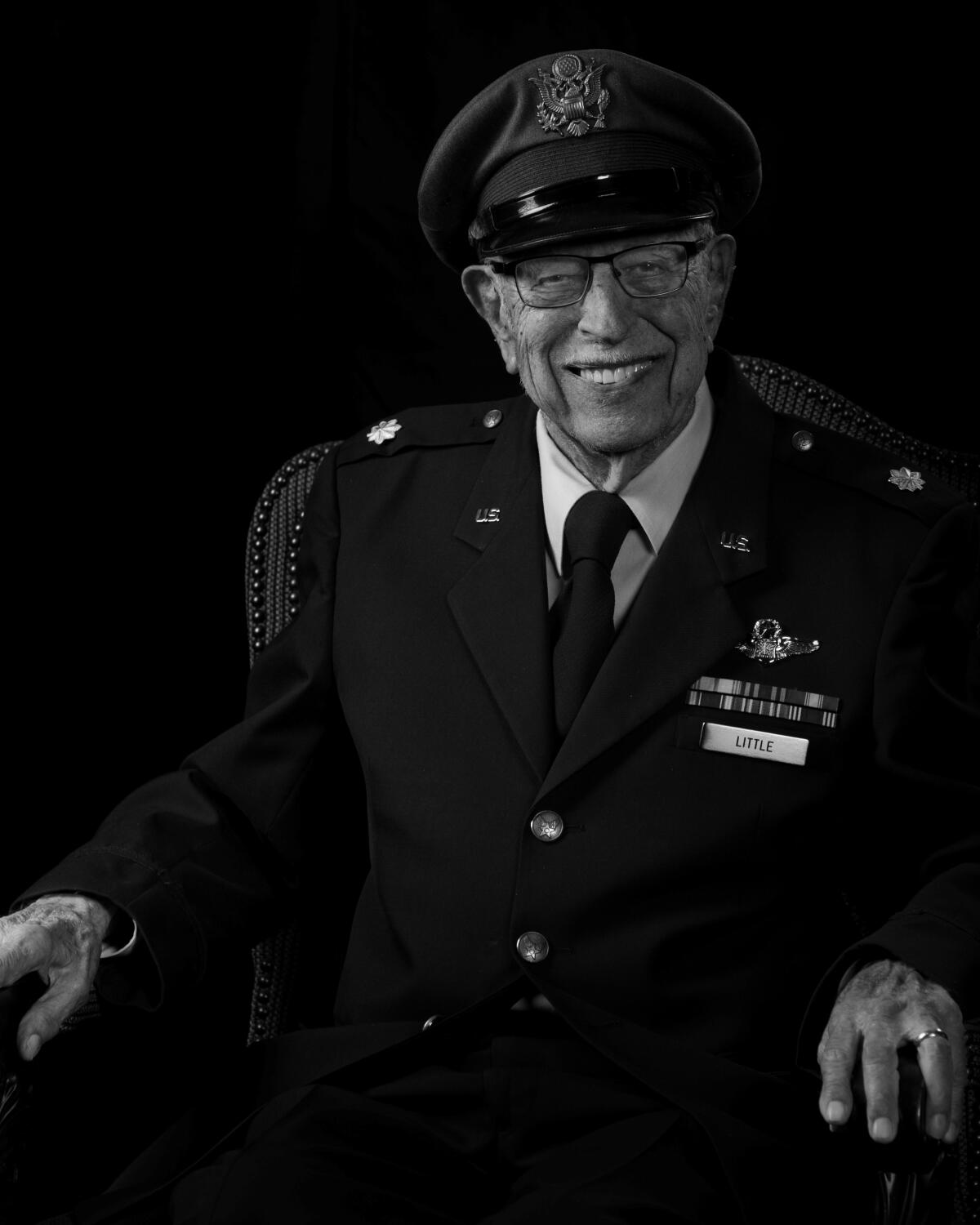
Ten of the World War II veterans he has photographed were women. One couple he photographed together were veterans Chuck and Annie Muler, who died within months of each other, not long after their dual portrait was taken in 2018. Strand has also photographed several men of color who served in segregated units during the war, including the late Noboru “Don” Seki, who lost his left arm fighting with the heavily decorated Japanese American 442nd Regimental Combat Team, and Herbert Barnum, a Black Army sergeant who served as a mechanic in a mobile unit in Germany, Belgium and France.
His favorite veteran photo subject was Joe Renteria of Point Loma, who died in October at age 104. A Cherokee Indian who grew up in a Catholic orphanage, Renteria served as a top-secret Navy photographer during World War II, shooting photos of enemy bases from the air and capturing images of the secret U.S. nuclear bomb tests on Bikini Atoll in 1946. He posed for Strand holding the oversize camera that shot those images.
“That was my No. 1 favorite shoot,” Strand said. “I loved how much of his character we captured in the photo.”
To see more of Strand’s photographs, visit veteransportrait.com and mickeystrand.com.
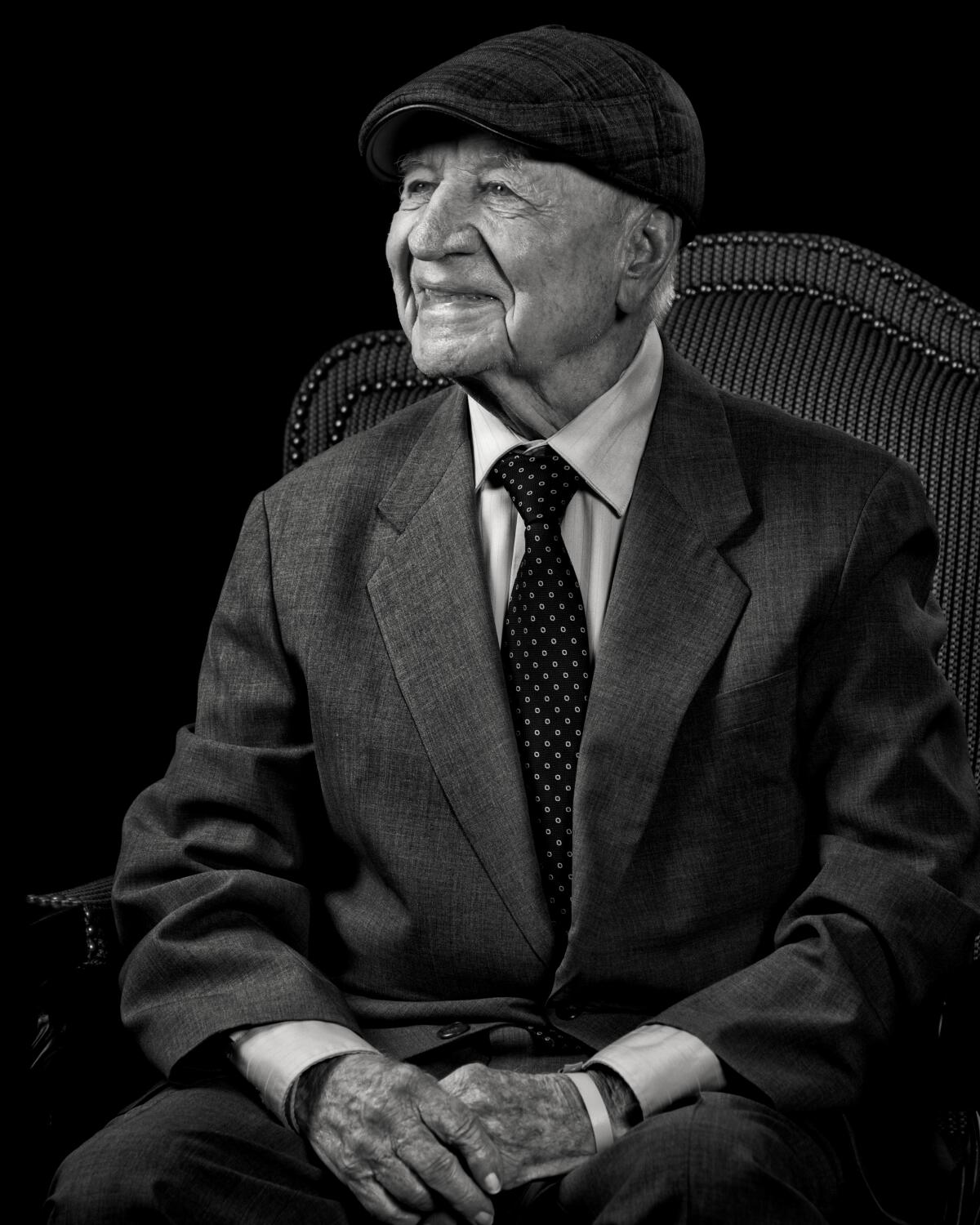
More to Read
Sign up for Essential California
The most important California stories and recommendations in your inbox every morning.
You may occasionally receive promotional content from the Los Angeles Times.


